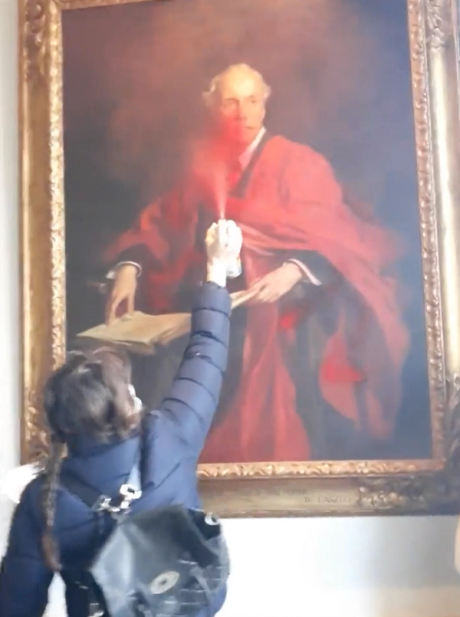
Police are investigating a vandalism incident at Cambridge University that took place on 8 March, when two protesters slashed and destroyed a painting of the late UK politician Arthur Balfour. No arrests have yet been made and Cambridgeshire police declined to comment.The protesters, part of an organisation called Palestine Action, posted a video showing them spraying red painting on the 1914 canvas by the artist Philip de Laszlo, and then slashing the work. Two activists from Palestine Action also defaced a statue of Balfour at the UK House of Commons in November 2022, covering the memorial in tomato ketchup (they were later acquitted by a jury at Southwark Crown Court).Sally Davies, master of Trinity College, where the painting is displayed, said in a statement. “I am shocked by [the] attack in our college on our painting. I condemn this act of vandalism. We are cooperating with the police to bring the perpetrators to justice.”Balfour was a Conservative prime minister between 1902 and 1905. He later served as foreign secretary and wrote a letter that became the Balfour Declaration in 1917, advocating the creation of “a national home for the Jewish people” in Palestine.In an online statement, Palestine Action said: “Arthur Balfour, then UK Foreign secretary [in 1917], issued a declaration which promised to build ‘a national home for the Jewish people’ in Palestine, where the majority of the Indigenous population were not Jewish. He gave away the Palestinians’ homeland—a land that wasn’t his to give away… Britain’s support for the continued colonisation of Palestine hasn’t wavered since 1917.”The contents of the declaration have been interpreted in different ways however. Notably, the declaration stipulated that “nothing shall be done which may prejudice the civil and religious rights of existing non-Jewish communities in Palestine”. The document does not specify the political or national rights of these communities and did not refer to them by name.


























